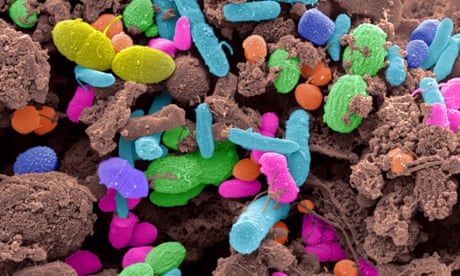reposted from
Common human skin bacteria could protect against cancer, say researchers
Staphylococcus epidermidis may help to protect against skin cancer, and could lead to preventive treatments, scientists reveal

A type of bacteria commonly found on human skin produces a substance that may help protect against skin cancer, researchers have revealed.
The scientists say the surprise discovery regarding a strain of Staphylococcus epidermidis highlights the importance of the community microbes found on and in the body in preventing disease.
While it is not clear whether the absence of this strain could increase the risk of skin cancer in individuals, the team say that it is possible the findings might one day lead to preventive treatments for patients.
“The presence of this strain may provide natural protection, or it might be used therapeutically to inhibit the growth of various forms of cancer,” said Prof Richard Gallo, a co-author of the research from the University of California, San Diego.
The finding was somewhat serendipitous. With previous research showing that chemicals produced by Staphylococcus species commonly found on healthy human skin can kill off certain harmful bacteria, the team looked at numerous strains to explore their antimicrobial powers.
Writing in the journal Science Advances, Gallo and colleagues describe how among their results, they discovered a strain of Staphylococcus epidermidis which produced a substance that killed off a type harmful bacteria responsible for infections such as strep throat. While it was not the only strain to do so, the chemical these microbes produced was unusual, boasting a structure similar to one of the key components of DNA, called adenine.
“The strain was originally detected in a screen for antimicrobial activity, but when we identified the nature of the chemical produced by this strain we proceeded with experiments to determine if it might have activity against tumours,” said Gallo.
The researchers found that the chemical, called 6-N-hydroxyaminopurine (6-HAP), hindered the production of DNA, with work in cell cultures revealing that 6-HAP prevents several types of tumour cells from growing and multiplying.
By injecting mice with this substance, the team found that 6-HAP is not toxic. However, when melanoma cells were introduced to mice, animals which had received 6-HAP intravenously ended up with tumours that were more than 60% smaller than those that had not received the substance.
The team also found application of the 6-HAP-producing strain of Staphylococcus epidermidis to the skin of mice appeared to greatly reduce both the number of pre-malignant skin tumours formed when the creatures were exposed to ultraviolet light, and number of mice affected, compared to those exposed to a strain that did not produce the substance.
While Staphylococcus epidermidis is commonly found on human skin, the team say about 20% of the healthy population is likely to have a strain which produces 6-HAP. “Our study found that it is common, but not on everyone,” said Gallo.
Julian Marchesi, professor of human microbiome research at Cardiff University who was not involved in the study, welcomed the findings.
“[This research] further adds to a growing understanding of how important the human microbiota, and in this case the skin microbiome, is to health. We have evolved to need these microbes and desperately need to understand all the roles they play in human biology and start to think more about what it is to be a human being,” he said. “The next stage of this exciting work, will be to translate it to human clinical trials and show that this bacterially produced chemical can protect the host from skin cancers.”


No comments:
Post a Comment